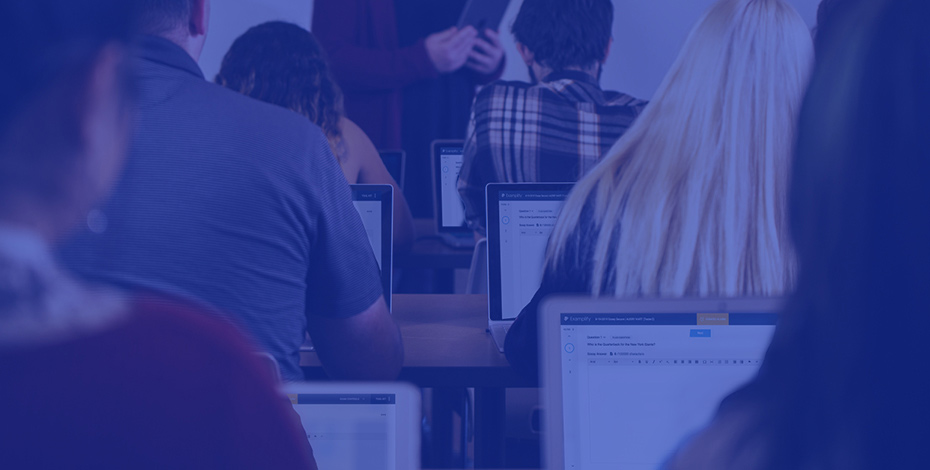Analytics, the science of gathering, organizing, and analyzing raw data in order to draw statistically valid conclusions and make reliable forecasts, has long been a driving force in business. Data analytics has a wide variety of business applications, from pinpointing bottlenecks in manufacturing processes to providing insights that guide complete business model transformations. Analytics is a core operation in modern business, and it is only becoming more important over time.
Many of the same drivers that lead businesses to explore the possibilities of data analytics are prevalent in education. The challenges of limited resources, increased competition, and greater accountability are propelling institutions to discover its potential in improving educational outcomes. What they are finding is that data can provide the answers to critical questions and help discover correlations in research. Educators can use data to uncover subtle patterns and predict otherwise unknown consequences.
Key Applications of Analytics in Education
Educators, administrators, researchers, instructional designers, and other professionals in education have been applying learning analytics to some degree for years. They have been tracking student progress, compiling student data, designing assessments, and drawing conclusions to create incremental improvements. Basic analytics tracking capabilities are often embedded in learning management systems (LMS), which makes the process more efficient. Tracking systems are now able to monitor and collect all kinds of data, from student resource utilization and testing performance to graduate readiness for specific careers.
Because the technology behind analytics software has accelerated so quickly, more and more possibilities are now emerging across the four basic types of data analytics:
- Descriptive analytics describe occurrences over time.
- Example 1: Measuring key indicators of student performance over time, such as a single student’s grades in math.
- Example 2: Tracking an age group’s standardized testing averages compared to other age groups over time.
- Diagnostic analytics attempt to explain why something happened, and often involve hypothesis.
- Example 1: Correlating the outcomes of tested learning practices to a deviation from the standard result.
- Example 2: Identifying why this year’s freshman class at a university had a lower average GPA than last year’s.
- Predictive analytics make forecasts using data and trend analysis.
- Example 1: Predicting that a certain institutional strategy, such as incorporating weekly quizzes, will raise information retention by a specific level.
- Example 2: Forecasting that a pedagogical innovation will improve student test scores in a specific subject.
- Prescriptive analytics suggest a course of action based on historical data.
- Example 1: A university making the institutional decision to bring in a more culturally diverse student body to improve hiring for professional collaboration capabilities following graduation.
- Example 2: Using data visualization with tools to provide benchmarks for student enrollments in degree programs that produce more graduates to meet industry hiring needs.
The Present and Future of Learning Analytics
We are just beginning to discover the vast potential for learning analytics. Universities, testing organizations, massive open online course providers, and government agencies are all ramping up their learning analytics programs. Applications for analytics in learning have grown to include increasing professor accountability for producing career-ready graduates, helping universities determine where to invest limited resources, informing specific curricular designs, and enabling students to achieve their learning ambitions.
University administrators are using it to learn which courses students find engaging and which courses are associated with student attrition. Researchers are examining micro and macro patterns of student and instructor behavior and consequences for learning. Learning system designers now understand more precisely how individuals interact with their systems and are using the data to make improvements. Large-scale analytic approaches are being used by many institutions to determine the influence of multiple variables and the interactions between them. The more data is compiled and shared across institutions, the more potential there is for analytics to solve persistent educational challenges.
ExamSoft Learning Analytics
ExamSoft is a leader in the delivery of learning analytics. ExamSoft’s clear, actionable data insights and easy-to-understand reports allow educators to coordinate student performance with remediation efforts and measure course objectives against accreditation standards. By aligning these criteria, it becomes much easier for institutions to establish cause and effect to discover areas of improvement in the curriculum.
The art of teaching is gradually becoming a science, and students, instructors, and higher learning institutions are all benefitting. Academia will continue to realize more of the potential learning analytics has to offer.
Sources:
Wiley: Harnessing the Potential of Learning Analytics Across the University
Northeastern University: What Is Learning Analytics & How Can It Be Used?






